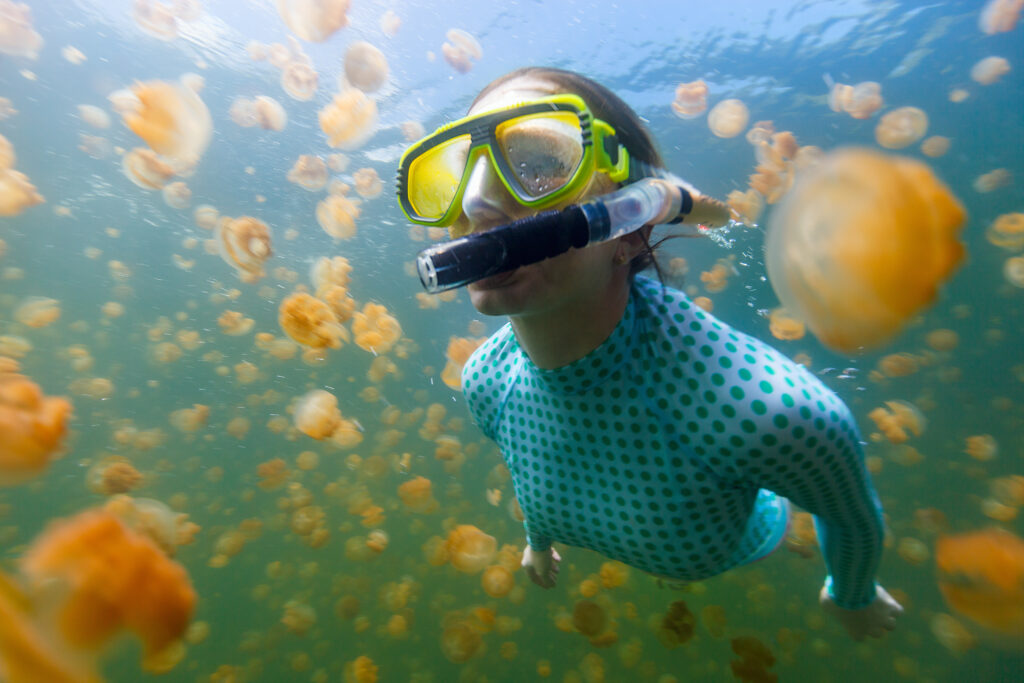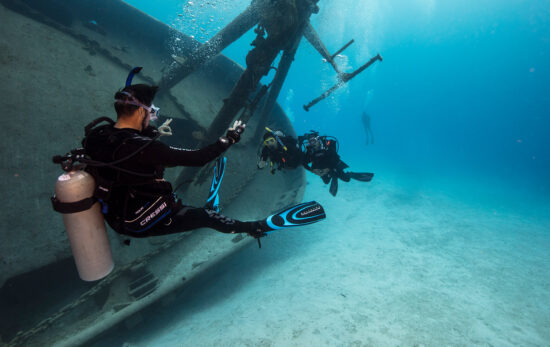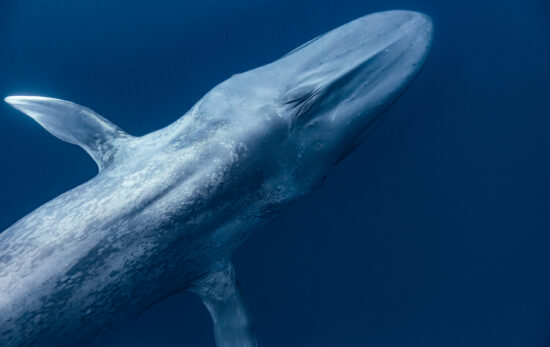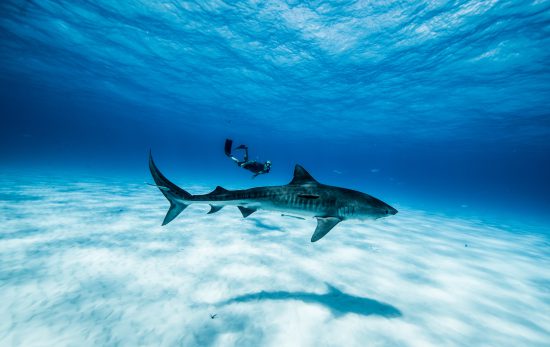For many, Fall is synonymous with preparations for back-to-school. In non-pandemic times, images of students flocking towards their campuses come to mind. And, while traditional schoolhouses and university campuses don’t exist underwater, there are different types of “schools” — of fish and marine life!
Here are some of the funny and weird things we call groups of marine life.
Schools of Fish
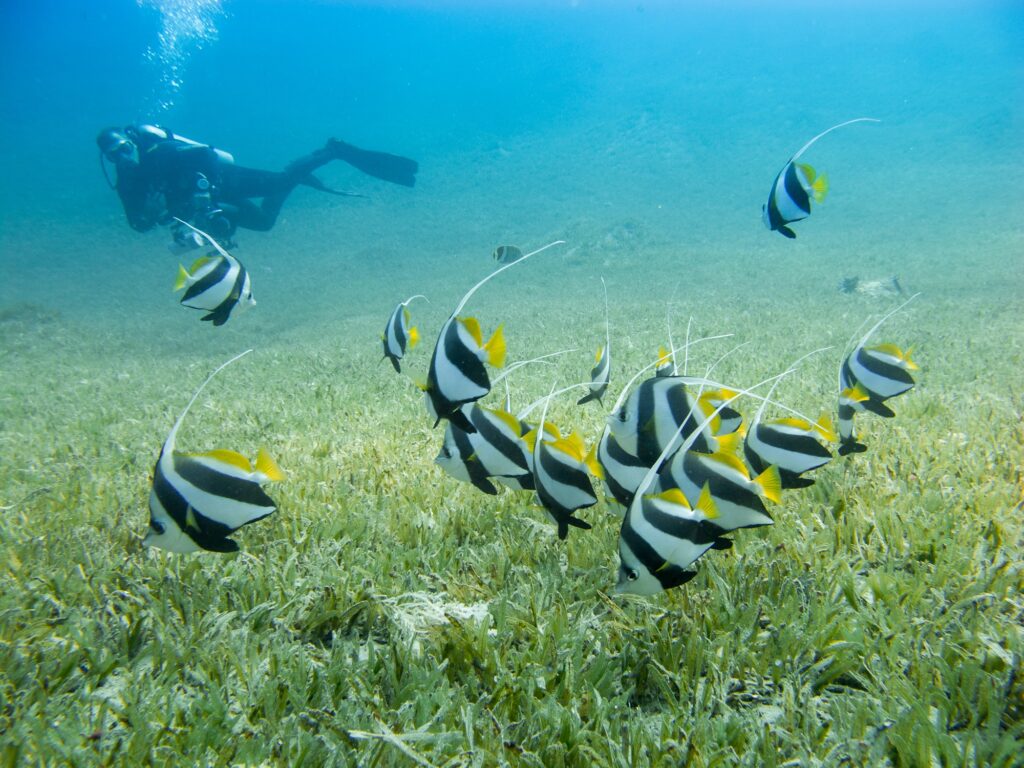
We’ve all heard of “schools” of fish. In fact, we most commonly call groups of fish a “school” or “shoal.” Both words evolved from the same Dutch root word “schole,” meaning a troop or a crowd.
However, these terms don’t apply to all sea life. Instead, depending on what animal is aggregating, there are different and interesting names for groupings. Now, we’ll explore some of the more unique names for collections of marine animals.
What Species of Fish?
Even within the very broad category of “fish,” what to call a group of them varies depending on the species. You might dive with a “battery” of barracuda, a “flotilla” of swordfish, and, even a giant “army” of herring.

A diver enjoys the view with a large school of barracuda in the background. 
A group of barracuda are called a “battery.”
Following the Motion
The naming conventions for some collections of fish come from their movements as a group. For example, perhaps the most famous would be a “run” of salmon, which typically describes the upstream movement of the fish to their home spawning grounds.
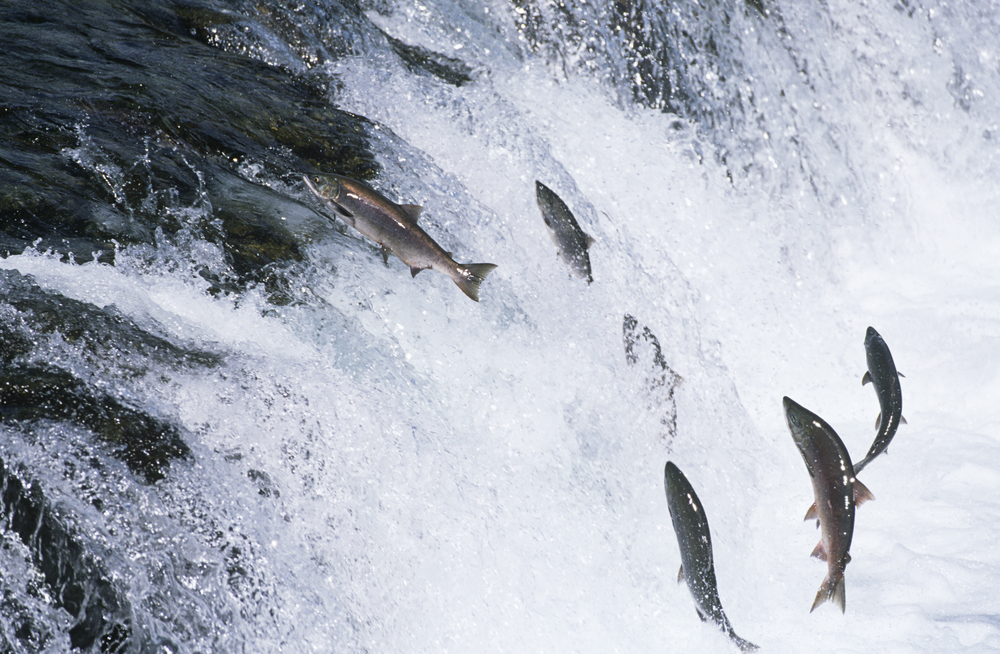
In another instance, dogfish moving in a large mass are a “troop” of dogfish. In contrast, we call graceful flying fish, that literally glide over the surface of the ocean, a “glide” of flying fish.
Similarly, NOAA described a massive group of cutthroat eels as a “swarm” of eels. In 2018, researchers found this group of eels swimming together in the resource-scarce deep ocean. They had actually found the largest aggregation of fish ever recorded in the abyssal deep sea. Researchers both described the eels’ movements as “swarming at” bait packages as well as the grouping as a “swarm.” Other sources also cite a “bed” of eels or a “fry” of eels.
Sharks and Rays
It’s many a diver’s dream to see big groups of sharks or mass migrations of rays. However, not everyone knows to call a collection of these apex predators a “shiver” of sharks.
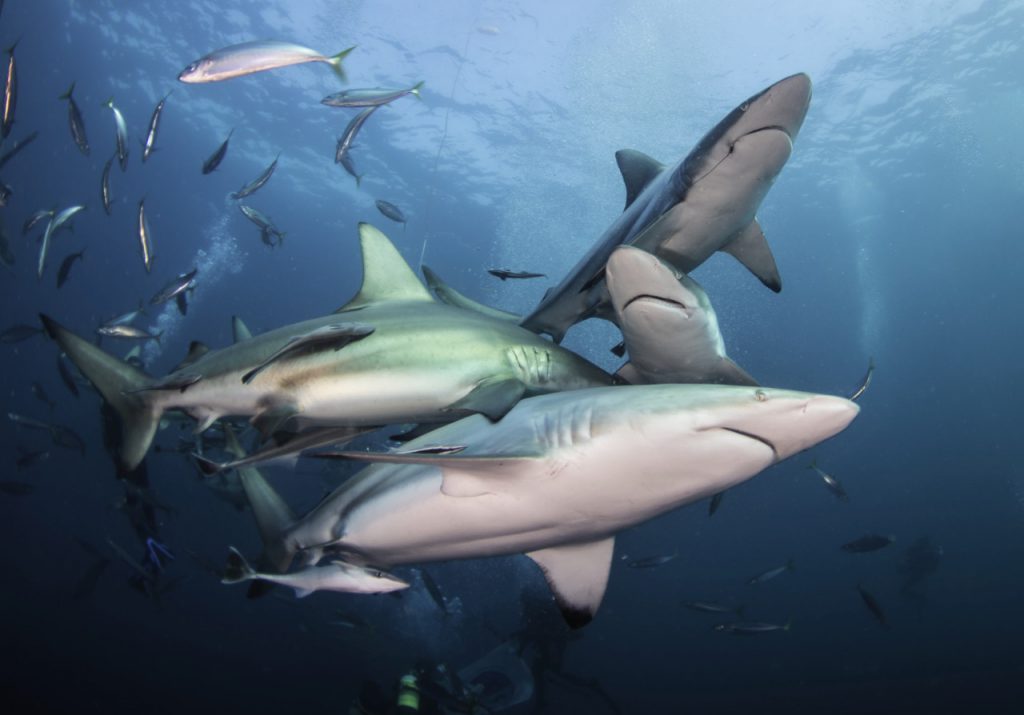
Ancillary to this, groups of closely-related rays, including mantas, spotted eagle rays and stingrays, are a “fever of rays”. There are several famous fevers of thousands of rays that should make anyone’s diving bucket list.
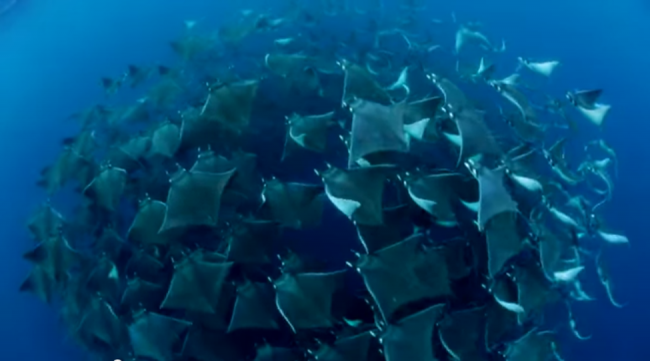
Marine Mammals
Scientists refer to a group of sea otters as a “raft” of sea otters. This likely refers to how resting sea otters will wrap themselves up in seaweed to prevent drifting away from each other.
For other marine mammals, including many species of whales and dolphins, “pod” of dolphins or “pod” of whales is the correct collective term. In the case of the famous Southern Resident Killer Whales, their family groups are even named by their pod identifications, like J-pod.
Finally, a group of narwhals is a “blessing” of narwhals. It’s rare to enjoy an encounter with these arctic unicorns of the sea, and we can totally guess where this name came from.
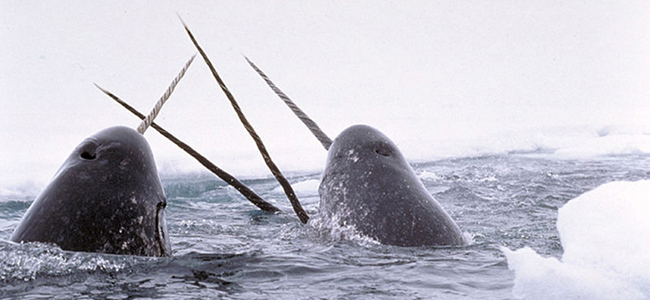
Marine Birds
Seabirds are an important part of the marine ecosystem. We refer to large groups of seabirds as a “wreck” of seabirds. They’re beautiful to watch when you’re out on a dive boat in a remote location.
With penguins, it gets a little trickier — and a little more fun! Groups of penguins in the water are “rafts” of penguins but, on land, we call them a “waddle” of penguins!
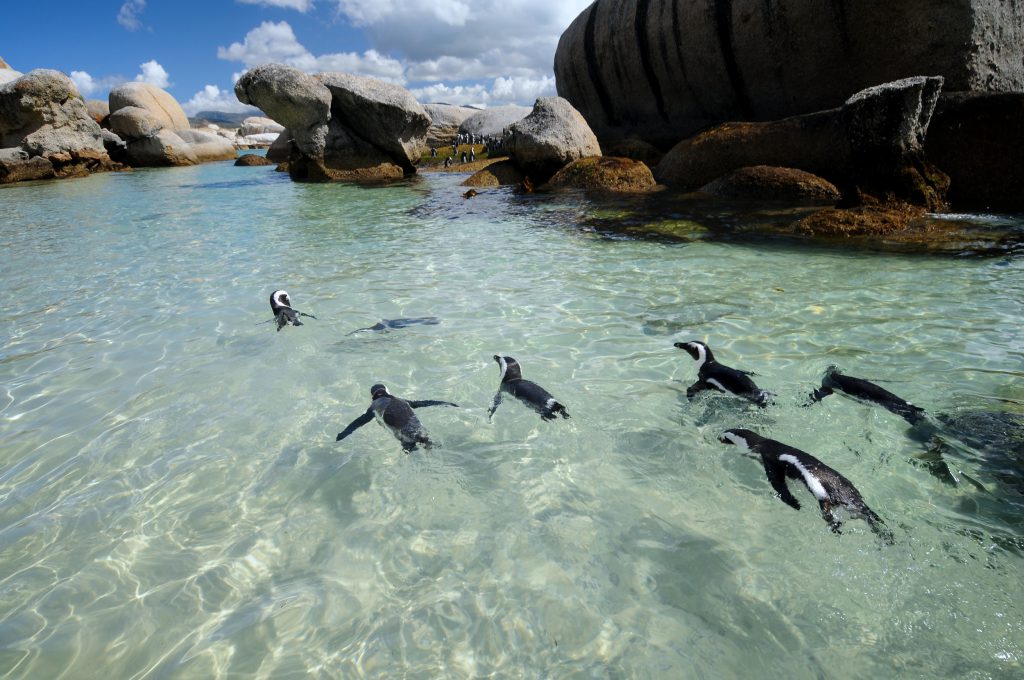
And some extras, for good measure!
Moreover, we call a gathering of crabs a “cast” of crabs but lots of lobsters a “risk” of lobsters. And a bunch of sea snails, somewhat ironically, are a “walk” of sea snails or a “rout” of sea snails. Finally, individual corals are “polyps” that grow into giant “colonies” of identical animals that cooperate and bring life to the reef.
Big groups of jellyfish, like the famous ones in Palau, are a “smack,” a “fluther,” “brood” or “bloom.”
